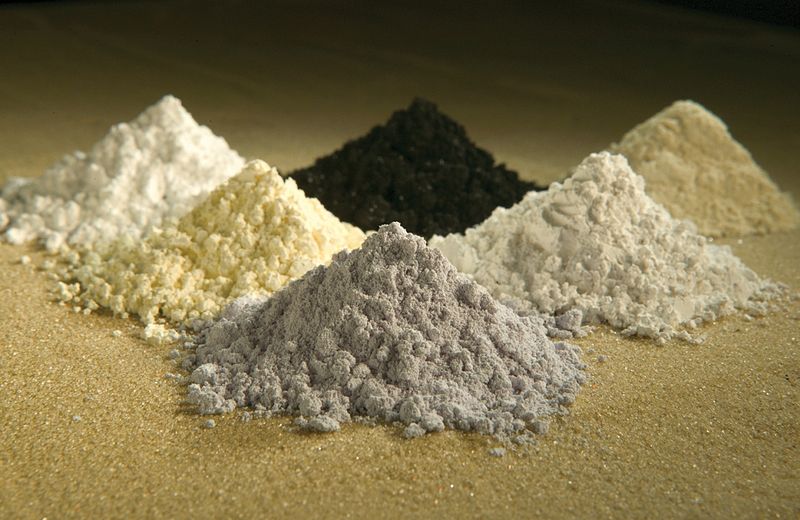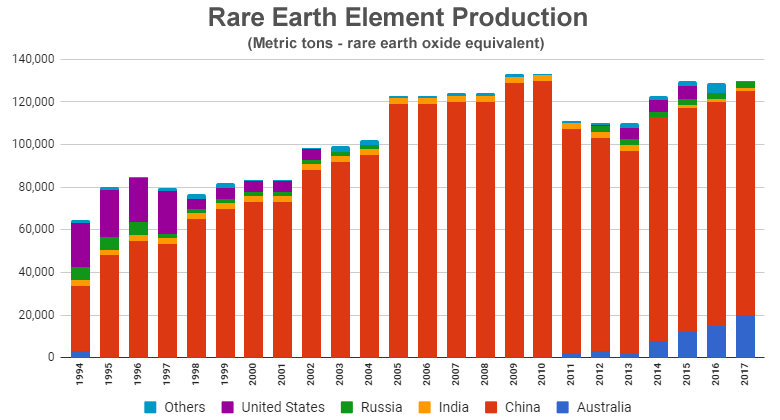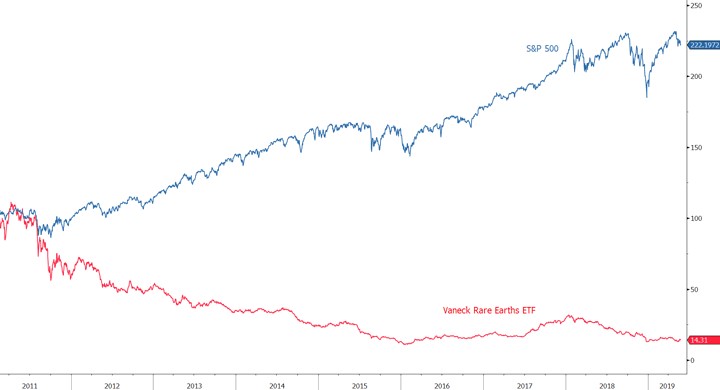
Date: 29 May, 2019 - Blog
Have the Chinese found a means of pressure to counter Donald Trump’s commercial and technological war (Huawei) ? Perhaps.
Rare earths are a group of 17 strategic metals: lanthanum, cerium, praseodymium, neodymium, promethium, samarium, europium, gadolinium, terbium, dysprosium, holmium, erbium, thulium, ytterbium, lutetium, scandium and yttrium. In fact, rare earths are not uncommon at all, they are found in abundance. But they are difficult to exploit because they are widely dispersed and the extraction is economically complicated.
Rare earth mining began in the mid-1960s, driven by the explosion of demand for color TVs. Until the early 1980s, the United States was virtually the only producer of rare earths, then for economic and ecological reasons, they abandoned the extraction and China replaced them. In 2010, China produced 95% of the rare earths.
Today, China produces 84% of rare earths, 12% of Australia and 2% of Russia, while China has only 35% of the world’s rare earth resources. This situation allowed
Source: United States Geological Survey
China to engineer higher prices, which provoked the arrival of new producers such as Australia, Russia, Thailand, Malaysia, India, Brazil or Vietnam.
They are indispensable to new civilian and military technologies, and used, among others, in semiconductors, rechargeable batteries, computers, smartphones, magnets, wind turbines, fluorescent lights, night vision, catalysts, aviation and armament.
The Chinese rare earth weapon would be an option to fight Donald Trump.
Between 2014 and 2017, China accounted for 80% of US imports of rare earths. Rare earths would therefore be a real weapon in the short-to-medium term against the United States. But the United States has alternatives. In March 2019, the bipartisan Congress signed a bill to boost the production of rare earths. There could also have other suppliers like Brazil (20% of world reserves), Vietnam (20%), Australia (6%) and India (6%).
The environment of listed companies in rare earths is composed of many (very) small companies, mainly Chinese and Australian. It therefore seems obvious to invest in rare earths with diversified ETFs/funds, although the choice is limited.
In stock market terms, China’s control of production did not translate into higher share prices of listed companies.
See graph.
Performance (base 100) Vanek Vectors Rare Earth /
Strategic Metals (red) and S&P 500 (blue)








